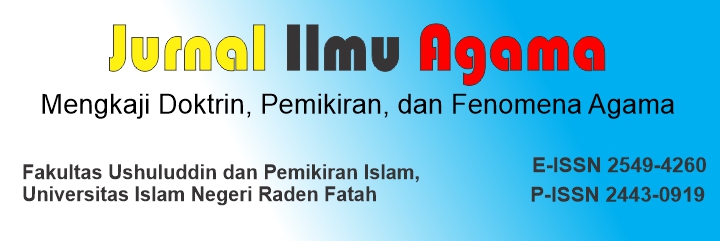KEPRIBADIAN TAHAN BANTING (HARDNESS PERSONALITY) DALAM PSIKOLOGI ISLAM
Main Article Content
Abstract
Article Details
Authors who publish with this journal agree to the following terms:
- Authors retain copyright and grant the journal right of first publication with the work simultaneously licensed under a Creative Commons Attribution 4.0 International License that allows others to share the work with an acknowledgement of the work's authorship and initial publication in this journal.
- Authors are able to enter into separate, additional contractual arrangements for the non-exclusive distribution of the journal's published version of the work (e.g., post it to an institutional repository or publish it in a book), with an acknowledgement of its initial publication in this journal.
- Authors are permitted and encouraged to post their work online (e.g., in institutional repositories or on their website) prior to and during the submission process, as it can lead to productive exchanges, as well as earlier and greater citation of published work.
How to Cite
References
Allred, K.D., & Smith, T.W. (1989). The hardy personality: Cognitive and physiological responses to evaluative threat. Journal of Personality and Social Psychology, vol 2 56 pp 257-266.
Anoraga, P. (1995). Psikologi Industri dan Sosial. Jakarta : PT. Dunia Pustaka Jaya.
Asma, U. (2009). Hidup Tenang Dengan Sabar. Jakarta: Belanoor
Cooper, C.L. et all. (2001). Organizational Stress. United States of America : Sage Publications.
Diahsari, E.Y. (2001). Kontribusi Stres Pada Produktivitas Kerja. Anima, Indonesian Psychological Journal. Vol. 16, No. 4, 361-371.
Echols, J.M., & Shadily, H. (1987). Kamus Inggris-Indonesia. Jakarta: PT Gramedia.
Franken, R.E. (2002). Human Motivation (5th ed.). Belmont, CA: Wadsworth.
Hadjam, N.R., Martaniah, S.M., Prawitasari, J.E., & Masrun. (2004). Peran kepribadian tahan banting pada gangguan somatisasi. Anima vol 2 no 19 pp 122-135.
Hasan, A.B.P. (2008). Psikologi Perkembangan Islami: Menyingkap Rentang Kehidupan Manusia Dari Prakelahiran Hingga Pasca Kematian. Jakarta: PT. Raja Grafindo Persada.
Ivanevich, J. (2007). Human Resources Management. McGraw Hill International Edition.
Kobasa, S.C. (1982). Hardiness and Health: A Prospective Study. Journal of Personality and Social Psychology, Vol. 42, No.1, 168-177.
Kobasa, S.C., & Puccetti, M.C. (1983). Personality and social resources in stress resistance. Journal of Personality and Social Psychology, 45, 839-850.
Kreitner, R. & Kinicki, A. (2005). Perilaku Organisasi. Buku 2. Edisi 5. Alih Bahasa: Erly Suandy. Jakarta: Salemba Empat.
McCalister, K.T., Dolbier, C.L., Webster, J.A., Mallon, M.W., Steinhardt, M.A. (2006). Stress Management: Hardiness and Support at Work as Predictors of Work Stress and Job Satisfaction. American Journal of Health Promotion January/February, Vol. 20, No. 3.
Nashori, F. (2008). Keikhlasan Survivor Bencana Tsunami dan Gempa Aceh. UNISIA, Vol. XXXI No. 67 Maret 2008
Rahardjo, W. (2005). Kontribusi Ketabahan dan Self-Efficacy terhadap stress kerja (Studi pada perawat RSUP dr. Soeradji Tirtonegoro Klaten). Seminar Nasional PESAT (Psikologi, Sastra, Arsitektur dan Sipil) Human Capacity Development and The Nations Competitiveness. (1). 47-57 Jakarta: Universitas Gunadarma.
Riggio, R.E. (2003). Introduction to Industrial / Organizational Psychology. 4th ed. New Jersey: Prentice Hall.
Saleh, A.R. (2009). Psikologi: Suatu Pengantar Dalam Perspektif Islam. Jakarta: Prenada Media Group.
Schultz, D.P & Schultz, S.E. (2002). Psychology and Work Today an Introduction to Industrial and Organizational Psychology. Ninth Edition. University of Florida : Pearson Education Inc.
Smet, B. (1994). Psikologi Kesehatan. Jakarta : PT Gramedia Widiasaran Indonesia.

